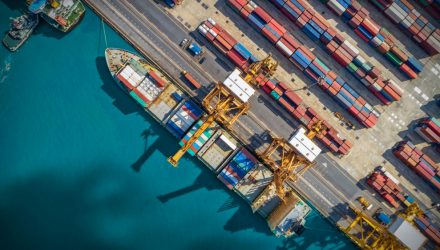Amazon’s ingenuity and diversification in shipping early on has placed it in an optimal position in the midst of supply chain snarls that have heavily impacted retailers during the pandemic.
Six years ago, Amazon began looking into building its own ocean freight business; now, it charters its own private cargo ships, leases planes, builds its own containers, and has increased the number of warehouses in the U.S. in order to handle increased capacity needs, reports CNBC. Because of its early buildout of its own supply chain, it has managed to sidestep a lot of the traffic jams at major ports that have been experiencing extreme constriction.
“Los Angeles, there’s 79 vessels sitting out there up to 45 days waiting to come into the harbor,” ocean freight analyst Steve Ferreira told CNBC last month. “Amazon’s latest venture that I’ve been tracking in the last two days, it waited two days in the harbor.”
Since Amazon controls the vessels its freight is coming in on, it can route them to alternate ports, unloading and then driving the freight where it needs to go, or flying it when necessary. Last year, Amazon spent $61 billion on shipping and has been making increasingly concentrated efforts to drive down costs. Those efforts now see the online retail giant responsible for shipping 72% of its own packages, up from 47% two years prior.
Amazon has extended further than just shipping vessels; the company now manufactures its own shipping containers in China, which, once they arrive Stateside, do not need to be sent back to Asia like other containers. This has been a boon in a supply chain crunch that has seen prices rise from $2,000 a container to over $20,000 this year.
“They are doing over 10,000 containers per month of the small- and medium-sized Chinese exporters. Amazon’s volume as an ocean vendor — that’s right, you heard me correct, they’re considered an ocean vendor — would rank them in the top five transportation companies in the Trans Pacific,” Ferreira said.
Investing in Amazon’s Ingenuity Through an ESG Lens
Investors looking for exposure to Amazon through an ESG lens need only turn to the SPDR S&P 500 Fossil Fuel Reserves Free ETF (SPYX).
The fund tracks the S&P 500 Fossil Fuel Free Index, a benchmark of companies within the S&P 500 that are “fossil fuel free,” defined as companies that don’t own fossil fuel reserves (thermal coal reserves and coal reserve byproducts, as well as oil or gas reserves).
That’s not the same as being devoid of all oil stocks. The fund still has minor allocations to fossil fuel companies, including Valero (VLO) and Halliburton (HAL). But without exposure to companies actually holding the physical oil, coal, or gas reserves, the fund’s energy allocation is much reduced. Energy comprises just 0.72% of the ETF’s sector make-up, as compared to 2.77% of the SPDR S&P 500 ETF Trust (SPY).
SPYX carries Amazon.com (AMZN) at a 3.92% weight.
SPYX has an expense ratio of 0.20%.
For more news, information, and strategy, visit the ESG Channel.

